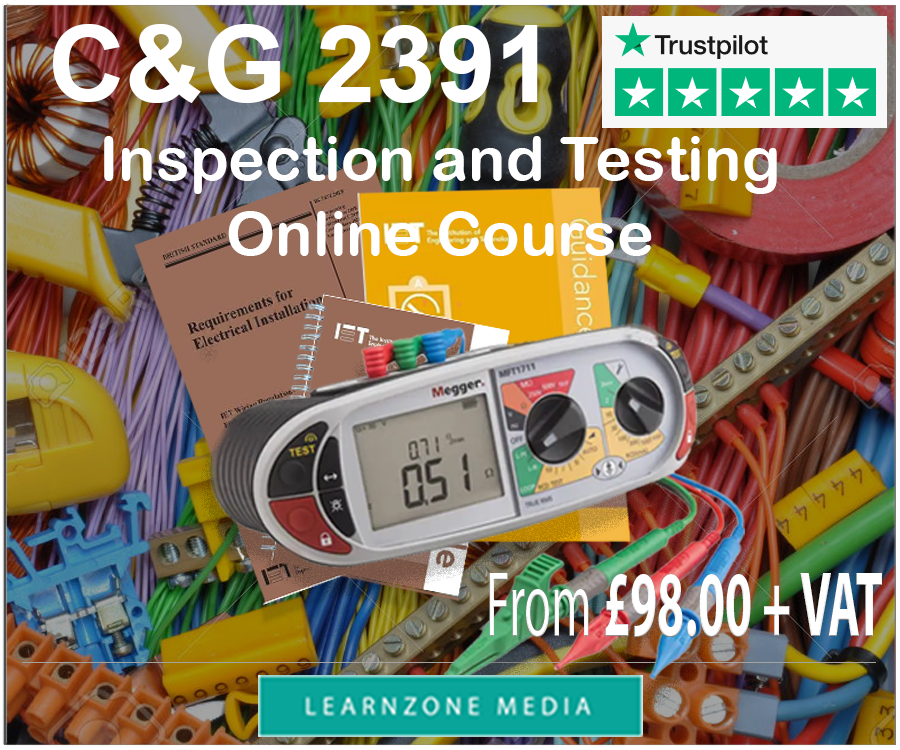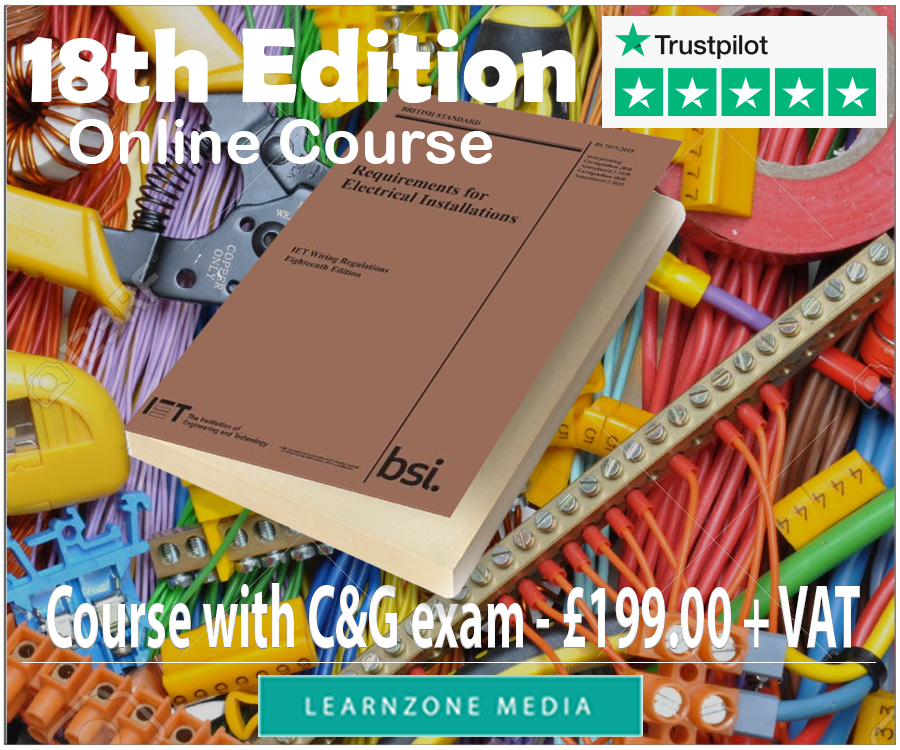C&G 2357 Unit 305 Questions With Answers
The C&G2357-305 forms part of the NVQ Level 3 Diploma in Electrotechnology. It is an online multiple-choice exam consisting of 15 questions, to be completed in 30 minutes.
It is the second exam encountered and focuses on these topics: statutory and non statutory regulatory requirements, checking the work location prior to the commencement of work, safe isolation, wiring systems and associated equipment, BS7671 Wiring Regulations, making good and protection of property, purpose and application of specifications and data, types of electrical cables and installations, wiring enclosures, safe use of power tools, hand tools and electrical equipment and environmental impact on electrical systems.
These are exam questions for the C&G 2357 Unit 305 exam. All the questions are from past exam papers. In order to simulate the exam conditions we recommend using a stopwatch set to 30 minutes. During that time you need to answer all 15 questions. Remember this is a closed book exam.
You will find the correct answers on the next page. Good luck!
1. What supply system uses the neutral conductor also as an earth, (PEN)?
a) TT
b) TNS
c) IT
d) TNC-S
2. With class I and II cabling installed in trunking, how should they be run:
a) Twisted together
b) Placed in the same trunking provided currents don't exceed 10A
c) Placed in separate compartments
d) in opposite directions to each other
3. A distribution circuit protected by a 20 A BS 1361 device, when forming part of a 230 V TT installation, must disconnect under earth fault conditions within a maximum time of
a) 0.2 seconds
b) 0.4 seconds
c) 1 second
d) 5 seconds
4. Isolators used to isolate supplies are designed to operate under
a) overload conditions
b) full load conditions
c) Short circuit conditions
d) No load conditions
5. In a long run of data cabling, the pairs are twisted together to
a) decrease the cable size
b) cut down the cost of the cable
c) make it neater
d) cut down interference
6 Which one of the following socket-outlet arrangements would not require additional protection by a 30 mA RCD?
a) 13 A socket-outlets for general use wired in a surface conduit
b) 13 A socket-outlets wired in surface conduit for a specifically labelled use
c) 16 A socket-outlets intended to supply mobile equipment to be used outdoors
d) 16 A socket-outlets in a swimming pool location
7. BS7671:2008 is NON STATUTORY. What does this mean?
a) Guidelines only
b) Must be used on all electrical work regardless
c) All companies MUST have the book
d) It is the law!
8. What year is associated with the Electricity at Work Act ?
a) 1999
b) 1974
c) 2002
d) 1989
9. BS7671:2008 wiring regulations do not 'normally' apply to which ONE of the following types of electrical equipment?
a) railway track signals
b) rotating machines
c) emergency lighting
d) fire alarm systems
10. Which of the following is not a provision for basic protection against electric shock?
a) Barriers
b) Enclosures
c) Electrical separation
d) Insulation of live parts
11. How many socket outlets can be connected to an un-fused 2.5sq mm 'spur' on an A2 radial circuit?
a) unlimited
b) 10
c) 2
d) 1
12. What colour is a live (line) conductor in a single phase supply?
a) Brown
b) Blue
c) Black
d) Grey
13. In three-phase a.c. circuits, the conductor designated as L2 shall be coloured
a) brown
b) blue
c) black
d) grey
14. What is the usual conductor size for a domestic lighting circuit?
a) 6.0sqmm
b) 2.5sqmm
c) 4.0sqmm
d) 1.5sqmm
15. What protective device is best suited to protecting against earth leakage currents, overload currents and short-circuit currents?
a) RCBO
b) MCB
c) Cartridge fuse
d) RCD





